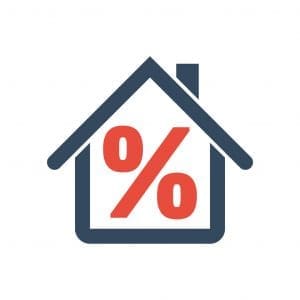The relationship between bond rates and mortgage rates is a critical topic for understanding housing market dynamics. Bond rates, particularly those of U.S. Treasury securities, serve as a benchmark for various interest rates, including those for mortgages. This article explores how changes in bond rates influence mortgage rates, the mechanisms behind this relationship, and the broader economic implications for homebuyers and the housing market. By examining the role of Treasury yields, investor behavior, and economic conditions, this article provides a comprehensive analysis of this financial interdependence.
Mortgage interest rates are a pivotal factor in the housing market, influencing affordability and demand for homeownership. These rates do not exist in isolation but are closely tied to broader financial markets, particularly bond markets. Bond rates, especially those of U.S. Treasury securities, are often considered a foundation for setting mortgage rates. Understanding this relationship is essential for homebuyers, investors, and policymakers. This article examines how bond rates affect mortgage rates, the mechanisms driving this connection, and the implications for the housing market. By analyzing economic principles and market dynamics, we aim to clarify this complex relationship.
The Role of Bond Rates in Financial Markets
Bond rates, or yields, represent the return investors earn on bonds, such as U.S. Treasury notes or bonds. The 10-year U.S. Treasury note is particularly significant because its yield serves as a benchmark for many interest rates, including mortgages (Investopedia, 2023). Treasury securities are considered low-risk investments because they are backed by the U.S. government, making their yields a reference point for pricing other financial products.
When bond prices rise, yields fall, and vice versa, due to the inverse relationship between bond prices and yields. For example, if demand for Treasury bonds increases, their prices rise, lowering yields. Conversely, if investors sell bonds, prices drop, and yields increase. These fluctuations in Treasury yields directly influence the cost of borrowing across various sectors, including mortgages (Federal Reserve Bank of St. Louis, 2022).
How Bond Rates Influence Mortgage Rates
Mortgage rates are primarily determined by the yields on mortgage-backed securities (MBS), which are bonds created by pooling mortgages and selling them to investors. The yields on MBS are closely tied to the 10-year Treasury note yield because both are long-term, fixed-income investments with similar risk profiles (Consumer Financial Protection Bureau, 2021). When Treasury yields rise, investors demand higher returns on MBS to compensate for the opportunity cost of not investing in Treasuries, leading to higher mortgage rates.
For instance, if the 10-year Treasury yield increases from 3% to 4%, investors may require a higher yield on MBS to make them attractive. This increases the cost of borrowing for homebuyers, as lenders pass on the higher yields to consumers in the form of elevated mortgage rates. Conversely, when Treasury yields fall, MBS yields typically decrease, resulting in lower mortgage rates (Mortgage Bankers Association, 2023).
The Spread Between Treasury Yields and Mortgage Rates
The difference between the 10-year Treasury yield and mortgage rates, known as the “spread,” reflects additional risks associated with mortgages, such as prepayment risk and credit risk. Typically, mortgage rates are 1.5 to 2 percentage points higher than the 10-year Treasury yield. For example, if the 10-year Treasury yield is 3.5%, a 30-year fixed mortgage rate might range from 5% to 5.5%. This spread can widen or narrow based on economic conditions, investor confidence, and market volatility.
During periods of economic uncertainty, such as a recession, investors may flock to the safety of Treasury bonds, driving down yields and narrowing the spread. This can lead to lower mortgage rates, making borrowing more affordable. Conversely, in a strong economy, rising Treasury yields can widen the spread, increasing mortgage rates (Federal Reserve Bank of St. Louis, 2022).
Economic Factors and Investor Behavior
Several economic factors influence bond rates, which in turn affect mortgage rates. Inflation is a primary driver: when inflation rises, investors demand higher yields to offset the eroding purchasing power of future bond payments. This pushes up Treasury yields and, consequently, mortgage rates. For example, in 2022, rising inflation led to a surge in the 10-year Treasury yield, causing mortgage rates to climb above 7% for the first time in over a decade.
Federal Reserve monetary policy also plays a significant role. When the Fed raises interest rates to combat inflation, short-term rates rise, often influencing longer-term Treasury yields. In 2023, the Fed’s aggressive rate hikes contributed to elevated Treasury yields, which pushed mortgage rates higher (Federal Reserve, 2023). Conversely, when the Fed lowers rates, Treasury yields and mortgage rates tend to decline.
Investor behavior further amplifies this relationship. During economic uncertainty, investors may shift to safer assets like Treasury bonds, lowering yields and mortgage rates. In contrast, during economic growth, investors may favor riskier assets, selling bonds and increasing yields, which raises mortgage rates (Mortgage Bankers Association, 2023).
Implications for Homebuyers and the Housing Market
The impact of bond rates on mortgage rates has significant consequences for homebuyers and the housing market. Higher mortgage rates increase borrowing costs, reducing affordability and potentially dampening demand for homes. For example, a 1% increase in mortgage rates can add hundreds of dollars to monthly payments on a $300,000 loan, pricing some buyers out of the market (Consumer Financial Protection Bureau, 2021).
Conversely, lower mortgage rates, driven by falling Treasury yields, can stimulate housing demand by making homeownership more affordable. In 2020, record-low Treasury yields led to mortgage rates below 3%, fueling a housing boom. However, low rates can also contribute to rising home prices, as increased demand outpaces supply, creating affordability challenges.
The housing market’s sensitivity to mortgage rates underscores the importance of monitoring bond market trends. Homebuyers must consider not only current rates but also potential future changes in Treasury yields when planning their purchases. Similarly, policymakers must balance inflation control with housing market stability, as aggressive rate hikes can cool the housing market excessively (Federal Reserve Bank of St. Louis, 2022).
Takeaway on the Bond Market and Mortgage Rates
The relationship between bond rates and mortgage rates is a complex but critical aspect of the financial system. U.S. Treasury yields, particularly the 10-year note, serve as a benchmark for mortgage rates due to their influence on mortgage-backed securities. Economic factors such as inflation, Federal Reserve policy, and investor behavior drive fluctuations in bond yields, which directly impact mortgage rates. These changes have profound implications for homebuyers, affecting affordability and housing market dynamics. By understanding this relationship, stakeholders can make informed decisions in a constantly evolving economic landscape.
References
Consumer Financial Protection Bureau. (2021). What is a mortgage-backed security?
Federal Reserve. (2023). Monetary policy reports.
Federal Reserve Bank of St. Louis. (2022). How Treasury yields affect mortgage rates.

